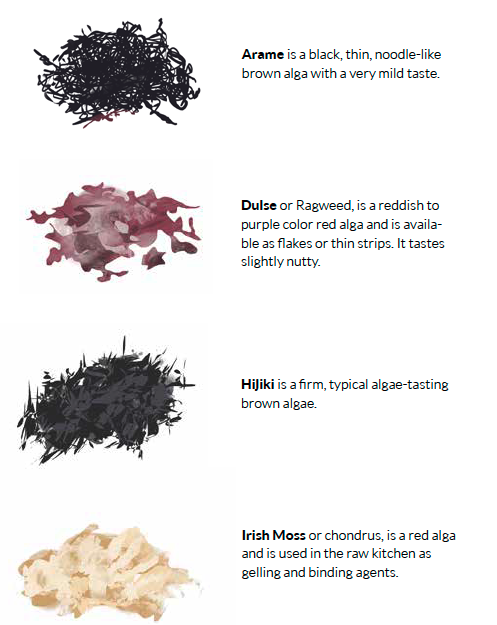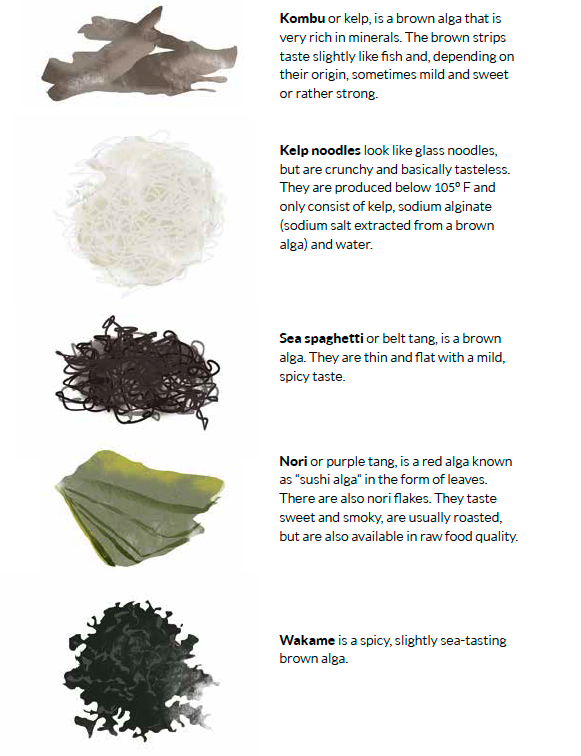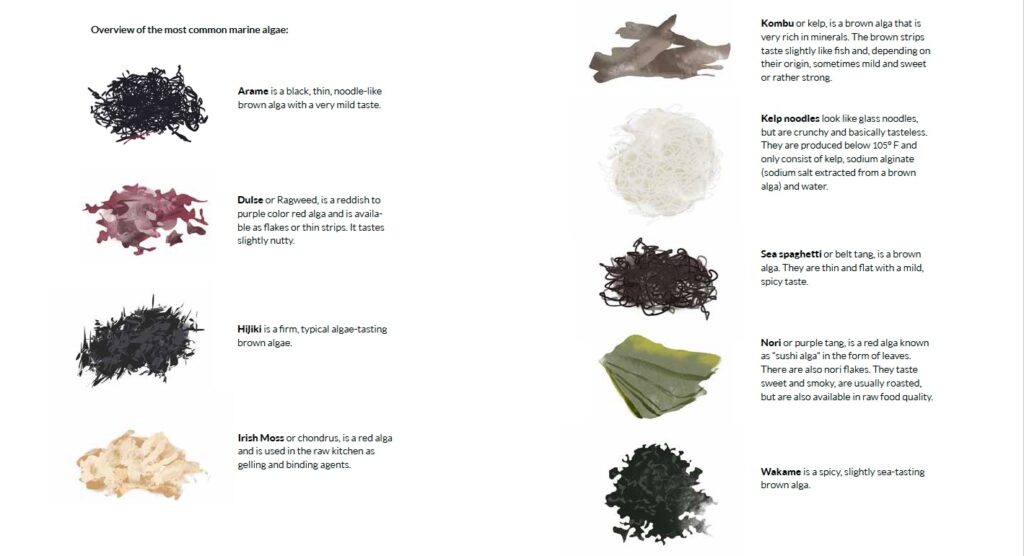Algae are being discussed as the food of the future. What actually makes them so exciting?
If we consider that more than 70 percent of the earth’s surface is covered with water and take into account that algae grow up to 30 times faster than land plants, we have an almost endless resource available to us in the form of these nutrient-rich vegetables from the sea.
Algae are also becoming more and more important for health reasons and for supplying the growing population with sufficient nutrients in the future.
Origin and Occurrence
Algae evolved in prehistoric times 2.5 to 3.5 billion years ago and, through their ability to absorb carbon dioxide and release oxygen, have been instrumental in creating an oxygenated atmosphere.
About 80,000 species of algae are currently known worldwide. It’s estimated that there are over 400,000 species, 100 of which may be used as food.
The Nutrient Richness of Algae
Algae are water-dwelling, photosynthesizing bodies and are considered to be the food that’s the most rich in chlorophyll. Additionally, they contain a vast wealth of amino acids, fatty acids, minerals, trace elements, and vitamins.
What’s remarkable is their content of omega-3 fatty acids and iodine. They’re also rich in calcium, magnesium, iron, potassium, zinc, selenium, and vitamins A, B-complex, C, E, and K.
Algae have a mucilage that’s an excellent humectant for the intestinal mucosa, which aids in the absorption of nutrients. Almost all algae have the ability to bind and remove toxins and heavy metals. Other positive health effects of algae consumption may include an increased immunity to stress, and the remineralization of fingernails, teeth, and hair.
There’s a distinction between freshwater and marine algae, and algae can also be categorized into microalgae and macroalgae based on their size.
Freshwater Algae
Freshwater algae are microalgae. They’re microscopic and can’t be seen with the naked eye, but instead are only seen as green water. Among the best known microalgae are Chlorella, Spirulina, and the Klamath or Afa algae. All three have a broad spectrum of nutrients.
- Chlorella algae are single-celled green algae. They contain half high quality protein, a remarkable amount of vitamin B12, and as the name suggests, the most chlorophyll of any plant. Additionally, chlorella algae provide plenty of folic acid, iron, beta-carotene, lutein, and alpha-linolenic acid (omega-3 fatty acid). They have a particularly excellent ability to absorb heavy metals. The intake of chlorella algae is able to effectively bind and eliminate heavy metals located in the digestive tract. As a dietary supplement, 2 – 4 g of chlorella is recommended daily. If it’s part of a cure, a higher amount of 20 – 40 g daily can be taken over several days without any problem
- Spirulina algae sare microscopic blue-green algae and occur naturally in strongly alkaline salt lakes, but also in fresh water. Strictly speaking, they’re technically considered bacteria (cyanobacteria) instead of algae, since their cells don’t have a nucleus. They’re very rich in nutrients and have a detoxifying, but also strengthening effect. In addition to green chlorophyll, they also contain phycocyanin, a special blue pigment that’s considered a very powerful antioxidant. For prevention, a daily consumption of 3 – 4 g of spirulina is recommended. This dose can be slowly increased up to 10
- Afa algae are also classified as bacteria and are mostly harvested wild in Klamath Lake. They have a high content of omega-3 fatty acids, B vitamins, and a complete amino acid profile. As a result, they’re said to have a concentration-boosting and immune-boosting effect. The recommended intake is 2 g per day.
Are you interessted in gaining a comprehensive understanding of the health benefits of a plant-based diet? Download the curriculum for our Holistic Nutrition Coach training program.
Marine Algae
Marine algae, or seaweed, are large-leaved macroalgae, divided into green algae, brown algae, and red algae. They can grow from a few millimeters to 60 meters in size and, depending on the species, contain large amounts of relevant iodine.
Because of this, marine algae are a great plant source of iodine. Note here that the iodine content of seaweed can vary quite a bit, not only from variety to variety, but also depending on the harvest time and where it’s grown.
Rule of thumb for iodine content:
Brown algae contain more iodine than red algae, and red more than green algae. Freshwater algae like chlorella and spirulina contain only small traces of iodine.The marine algae in detail:


Average iodine content of marine algae see:
“The Nutritional Significance of an Optimal Supply of Iodine”
Recipe ideas
Sushi With Cauliflower Rice
Cauliflower rice wrapped in nori leaves.
Conclusion
We believe that algae definitely have the potential to enrich our diet with their nutrient profile, in particular the macronutrient protein and the trace element iodine. And what makes them extremely advanced is their ability to bind and remove toxins and heavy metals.
Have you already stumbled upon this healthy vegetable as a great new taste and valuable source of iodine? What are your experiences with algae and what’s your favorite recipe?
We’d love to hear your feedback in the commen.
🌱 🌿 🌱
Would you like to join our unique, based on nutritional sciences and practice-oriented training program for gaining a high level of health?
We are more than happy to inform you about our training program on our website!








0 Comments